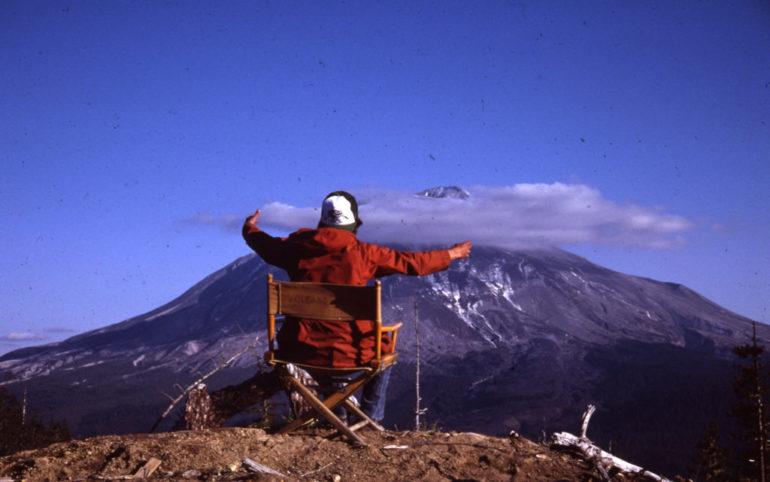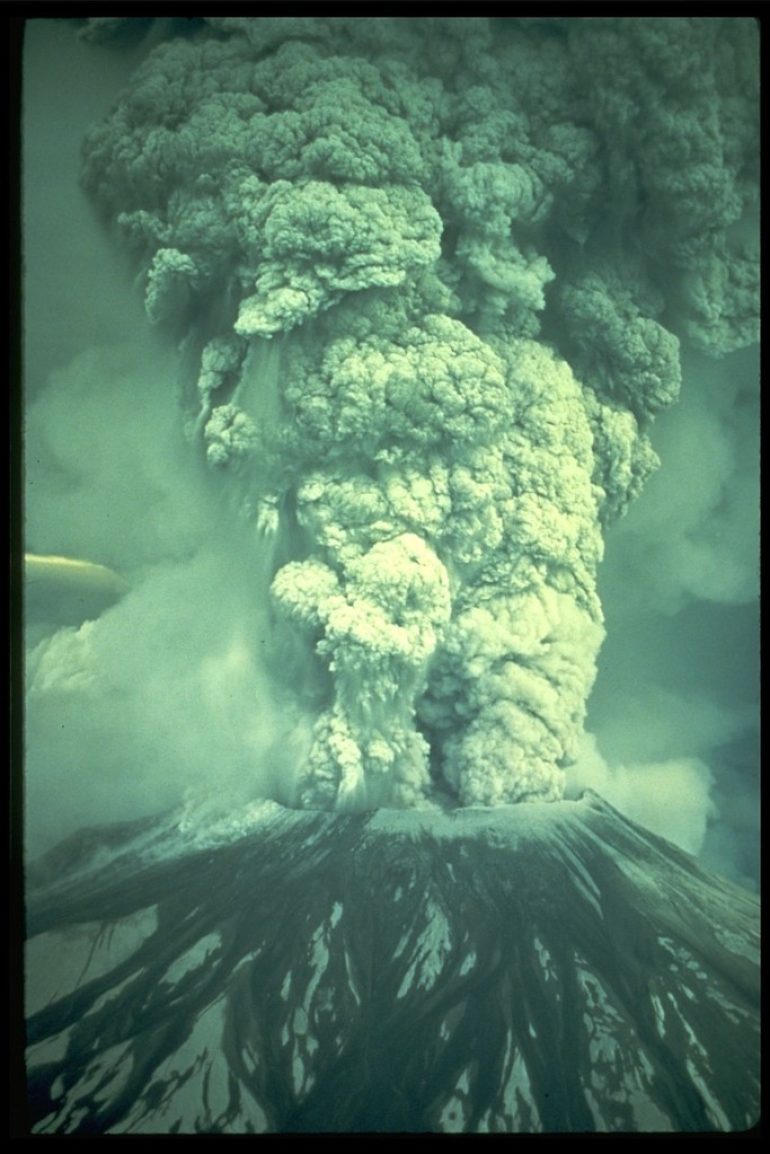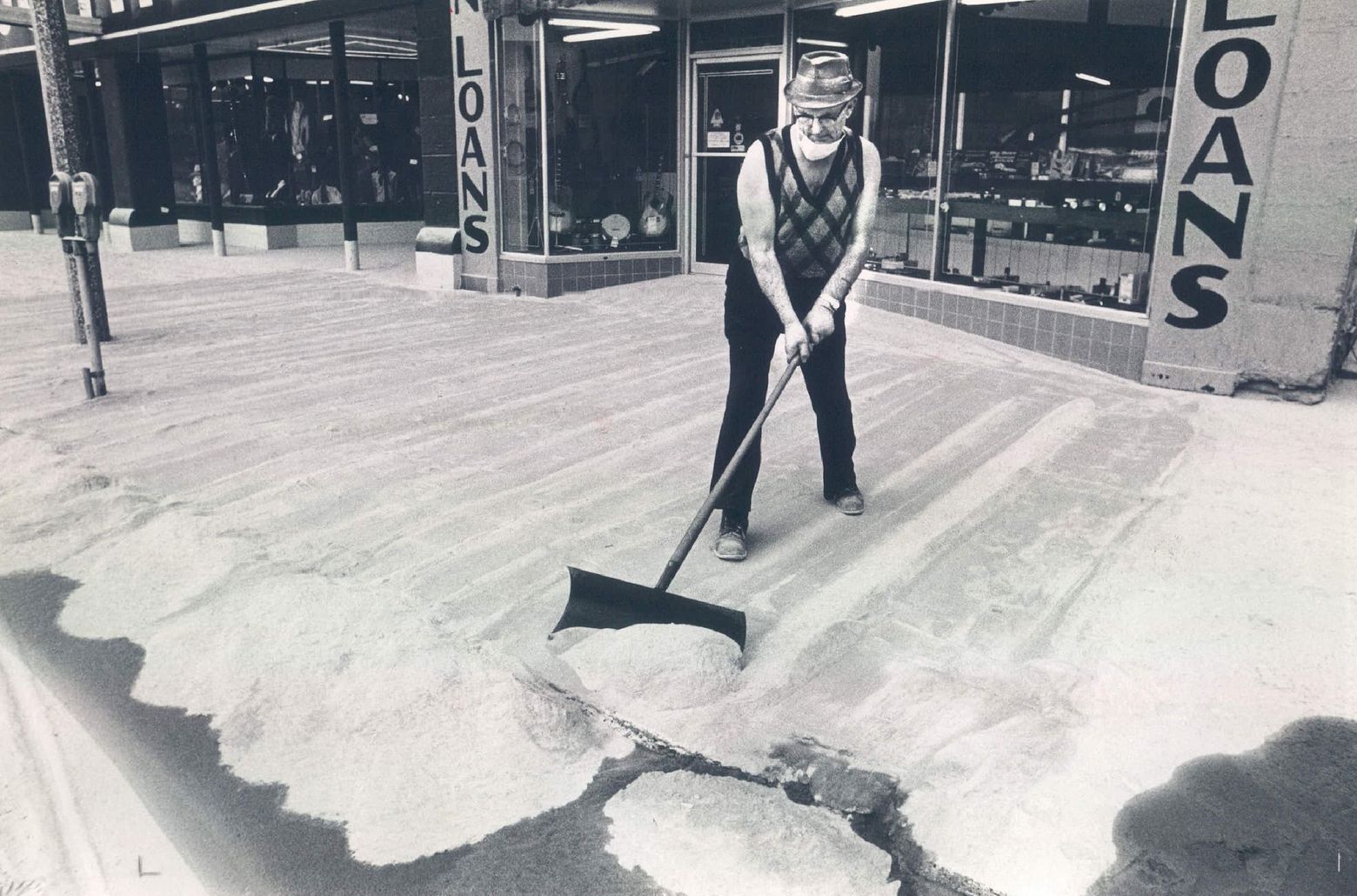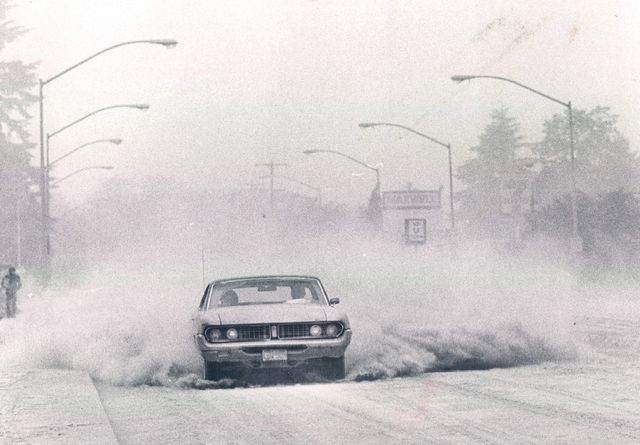The DU Lounge
Related: Culture Forums, Support ForumsHappy 38th anniversary, the 1980 eruption of Mount St. Helens
Mount St. Helens or Louwala-Clough (known as Lawetlat'la to the indigenous Cowlitz people, and Loowit to the Klickitat) is an active stratovolcano located in Skamania County, Washington, in the Pacific Northwest region of the United States. It is 50 miles (80 km) northeast of Portland, Oregon and 96 miles (154 km) south of Seattle, Washington. Mount St. Helens takes its English name from the British diplomat Lord St Helens, a friend of explorer George Vancouver who made a survey of the area in the late 18th century. The volcano is located in the Cascade Range and is part of the Cascade Volcanic Arc, a segment of the Pacific Ring of Fire that includes over 160 active volcanoes. This volcano is well known for its ash explosions and pyroclastic flows.
Mount St. Helens is most notorious for its major 1980 eruption, the deadliest and most economically destructive volcanic event in the history of the United States. Fifty-seven people were killed; 250 homes, 47 bridges, 15 miles (24 km) of railways, and 185 miles (298 km) of highway were destroyed. A massive debris avalanche triggered by an earthquake measuring 5.1 on the Richter scale caused an eruption that reduced the elevation of the mountain's summit from 9,677 ft (2,950 m) to 8,363 ft (2,549 m), leaving a 1 mile (1.6 km) wide horseshoe-shaped crater. The debris avalanche was up to 0.7 cubic miles (2.9 km3) in volume. The Mount St. Helens National Volcanic Monument was created to preserve the volcano and allow for its aftermath to be scientifically studied.
On May 18, 1980, a major volcanic eruption occurred at Mount St. Helens, a volcano located in Skamania County, in the State of Washington. The eruption (a VEI 5 event) was the most significant volcanic eruption to occur in the contiguous 48 U.S. states since the 1915 eruption of Lassen Peak in California. It has often been declared as the most disastrous volcanic eruption in U.S. history. The eruption was preceded by a two-month series of earthquakes and steam-venting episodes, caused by an injection of magma at shallow depth below the volcano that created a large bulge and a fracture system on the mountain's north slope.
An earthquake at 8:32:17 a.m. PDT (UTC−7) on Sunday, May 18, 1980, caused the entire weakened north face to slide away, creating the largest landslide ever recorded. This allowed the partly molten, high-pressure gas- and steam-rich rock in the volcano to suddenly explode northwards toward Spirit Lake in a hot mix of lava and pulverized older rock, overtaking the avalanching face.
An eruption column rose 80,000 feet (24 km; 15 mi) into the atmosphere and deposited ash in 11 U.S. states. At the same time, snow, ice and several entire glaciers on the volcano melted, forming a series of large lahars (volcanic mudslides) that reached as far as the Columbia River, nearly 50 miles (80 km) to the southwest. Less severe outbursts continued into the next day, only to be followed by other large, but not as destructive, eruptions later that year. Thermal energy released during the eruption was equal to 26 megatons.
Approximately 57 people were killed directly, including innkeeper Harry R. Truman, photographers Reid Blackburn and Robert Landsburg, and geologist David A. Johnston. Hundreds of square miles were reduced to wasteland, causing over a billion U.S. dollars in damage ($3.03 billion in 2017 dollars), thousands of animals were killed, and Mount St. Helens was left with a crater on its north side. At the time of the eruption, the summit of the volcano was owned by the Burlington Northern Railroad, but afterward the land passed to the United States Forest Service. The area was later preserved, as it was, in the Mount St. Helens National Volcanic Monument.

From a chair overlooking Mount St. Helens, Harry Glicken “conducts” bursts from the volcano on May 17, 1980. Glicken was scheduled to be there the following morning, but David Johnston took the shift. (Carolyn Driedger/U.S. Geological Survey)
By Tom Vogt, Columbian Science, Military & History Reporter
Published: May 18, 2018, 6:00 AM
Hydrologist recalls David Johnston’s recommendation at Mount St. Helens that saved her life 38 years ago
Carolyn Driedger and Mindy Brugman drove up to the Mount St. Helens observation point on May 17, 1980, as David Johnston was taking over for geologist Harry Glicken.
Before Glicken left, he had a little fun. He sat in a chair near the edge of the Coldwater II overlook, waving his arms in time to the beat of the volcanic activity as he “conducted” the eruption.
“We were young scientists, jazzed about being this close to the volcano,” said Driedger, who took a photograph of Glicken’s performance.
The on-the-job death rate for the four of them would turn out to be 50 percent.
....
The Columbian's first story on the volcano's massive May 18, 1980, eruption

The eruption of May 18, 1980 sent volcanic ash, steam, water and debris to a height of 60,000 feet. The mountain lost 1,300 feet of altitude and about 2/3 of a cubic mile of material stream downward from the center of the plume and the formation and movement of pyroclastic flows down the left flank of the volcano.
By The Columbian
Published: May 20, 1980, 12:00 AM
Mount St. Helens, the once-serene, cone-shaped peak that dominated the skyline northeast of Clark County and stood guard over the beautiful Spirit Lake recreation area, erupted with a force likened to an atom bomb Sunday, killing at least six and leaving 29 missing.
The mountain, about 45 miles from Vancouver’s back door, blew at 8:32 a.m. Sunday with an explosion that was heard 200 miles away in Canada but was unheard throughout the Vancouver-Portland area. The blast left the snow-capped mountain about 1,300 feet shorter than it was two days ago, spread death and destruction throughout the Toutle River valley north and west of the mountain and sent a gigantic ash cloud to the east.
By late morning today (May 19, 1980), that cloud had fanned out across several Northwest and Rocky Mountain states and was expected to continue all the way to New England.
Also by late morning, eight persons had been found. It was unknown whether they were among the 29 reported missing earlier. Five were picked up by rescue helicopters about eight miles from the volcano and three others were found four to five miles northwest of the mountain in the Fawn Lake area. No names were immediately available.
....
Originally published May 19, 1980.
Aristus
(66,250 posts)Interestingly enough, I didn't see or hear a thing, since the wind was blowing the wrong way.
First I knew of it was when an entire fleet of helicopters from Fort Lewis flew over our campsite on the way to the mountain. A Scout from an adjacent campsite ran over to ours with the news he had heard on the radio.
thinkingagain
(906 posts)I well remember that day
A good read on this that has a lot of info I never knew is
Eruption : the untold story of Mount St. Helens /
by Olson, Steve
Archae
(46,291 posts)He said it looked like a moonscape, and he collected a small jar of the ash to give me.
I still have it.
Mountain vomit! ![]()
Runningdawg
(4,509 posts)They left while they could when they returned their Christmas tree farm was gone. Every mechanical thing left behind was ruined. They sent pics and it was unbelievable. They tried to dig out personal belongings, even though they had sealed the house the best they could, it was pointless. A picture album that had been stored in the top of a closet was one of the few things they saved.
They ended up in a rental about 50 miles from their home and even there, it was a challenge. Dust fell continuously for a while, my aunt would clean in the morning and by night it was 1/8 thick over everything.
mahatmakanejeeves
(57,239 posts)Mount St. Helens memories: Ash
Tue., May 18, 2010

(Courtesy of Craig Numata)
The Spokesman-Review
Editor’s note: Readers submitted the following stories about the ash fallout from the eruption of Mount St. Helens on May 18, 1980.
edbermac
(15,932 posts)Fla Dem
(23,548 posts)mahatmakanejeeves
(57,239 posts)Originally published May 18, 2016 at 11:33 am Updated May 8, 2018 at 10:46 am
The eruption of Mount St. Helens killed 57 people and blanketed parts of the Pacific Northwest in ashen darkness.
By Evan Bush
Seattle Times staff reporter
....

Mike Clinton shovels ash off Yakima sidewalk on May 20, 1980. A thick coating of volcanic ash began falling two days earlier when Mount St. Helens erupted. (Matt McVay / The Seattle Times, file)

A car kicks up a cloud of volcanic ash as it travels a nearly deserted Chehalis street on May 27, 1980. (Barry Wong / The Seattle Times, file)
Evan Bush: 206-464-2253 or ebush@seattletimes.com; on Twitter: @EvanBush.